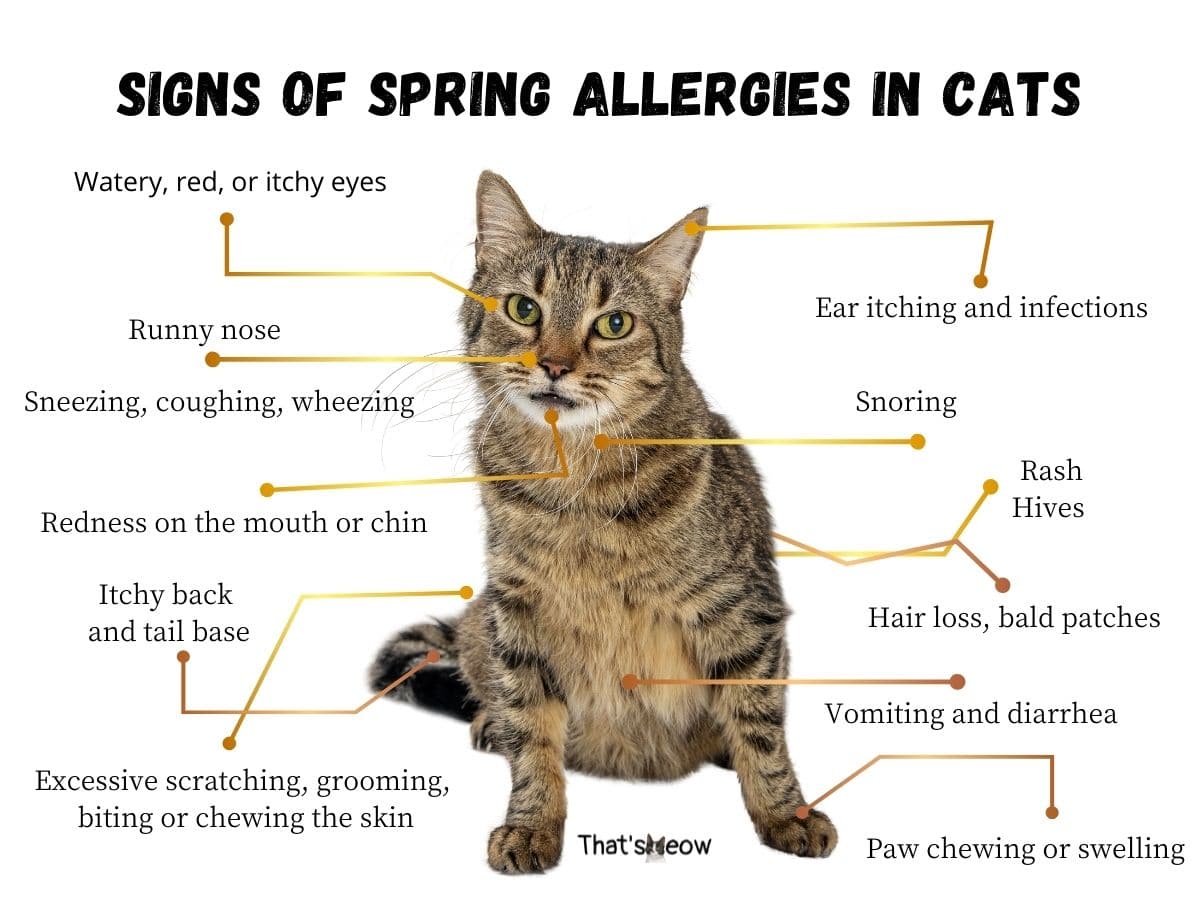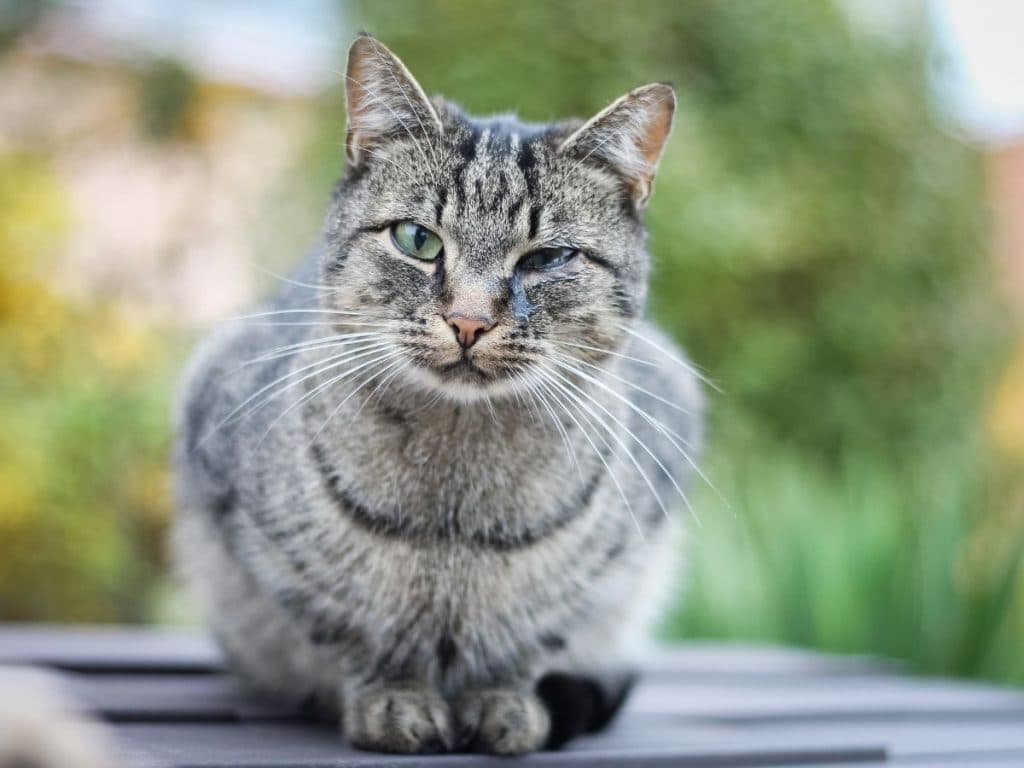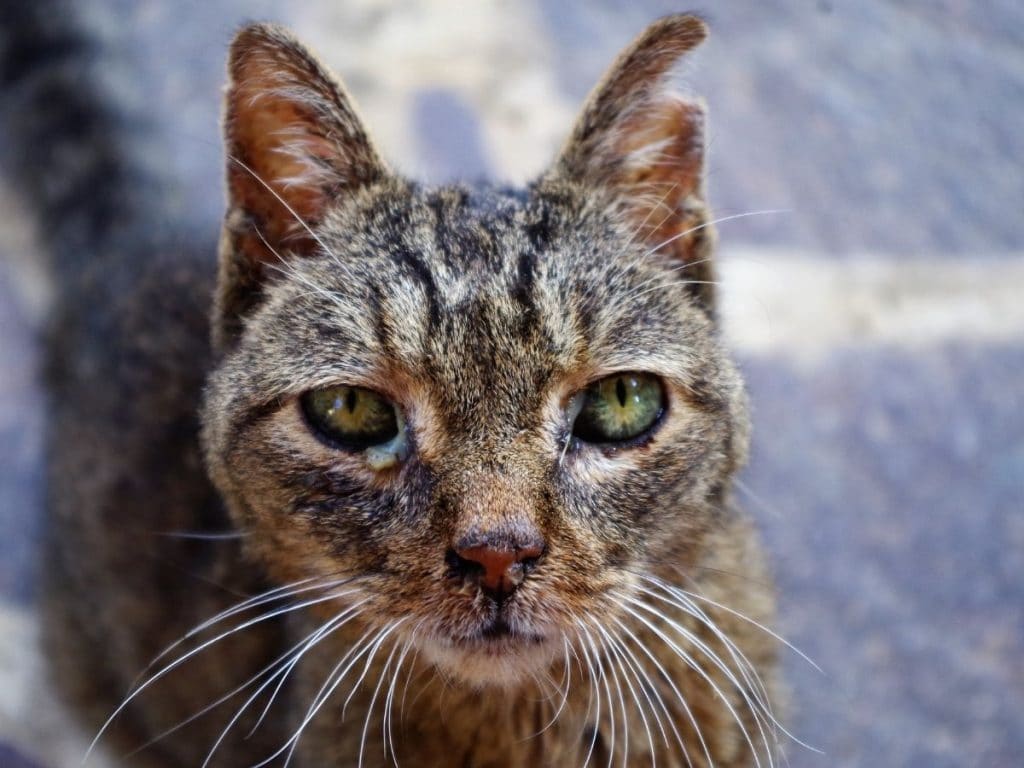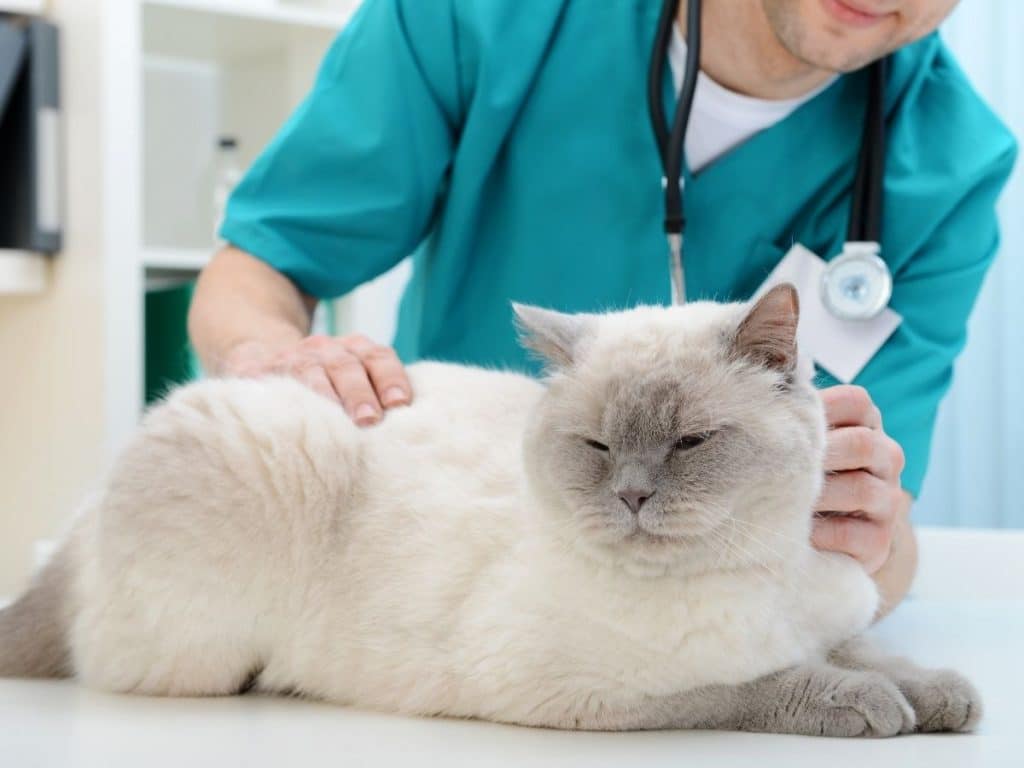As we come into the new season so do the pollen allergies. It’s quite common for humans to get hay fever, but, surprisingly, cats can also be susceptible to similar spring allergies. And although there is no permanent treatment for seasonal allergies in cats, there are some things you can do to help your sensitive kitty.
Cats can have allergic reactions to environmental substances like pollen, dust mites, and mold. These allergies can upset their eyes, skin, and also their respiratory system.
The difference between human seasonal allergies and cat seasonal allergies is that, unlike humans who go through respiratory issues, cats develop mostly skin and coat problems known as atopic dermatitis.

What are the symptoms of spring allergies in cats?
These symptoms can be an indicator that your cat might suffer from spring allergies:
- Watery, red, or itchy eyes
- Ear itching and infections
- Sneezing, coughing, wheezing
- Excessive scratching, grooming, biting, or chewing the skin,
- Itchy back and tail base
- Irritated and red skin
- Rubbing against objects
- Paw chewing or swelling
- Rashes
- Hives (allergic reaction manifested into a round-shaped rash of red welts that itch a lot and swell)
- Hair loss or bald patches
- Scabbing
- Redness on the mouth, chin, paws, or anus.
- Runny nose
- Snoring
- Vomiting and diarrhea
What causes seasonal allergies in cats?

During the pollination season, trees, flowers, grass, and weeds release pollen. And in Spring, usually, many types of vegetation can be pollinating at the same time, thus the environment is more pollen-rich than in other seasons. And pets can get exposed to all types of pollens no matter if they are indoors or outdoors.
Pollen can enter houses through open windows, or we may carry it indoors from our clothes, so even indoor-only cats can be susceptible to pollen allergies.
When your cat inhales pollen, for example, the pollen triggers the cat’s immune system into believing that a dangerous substance has entered its body. The immune system then reacts typically with skin or ear inflammation which leads to redness and itchiness, or lesions on the skin. These reactions make the cat scratch its skin and be more irritable (than usual). If the itchiness persists for a long time your cat will start to scratch excessively, causing more skin lesions, infections, hair loss, and bald patches on the coat.
What can you do to help your cat with spring allergies?

As I said before, there isn’t a total remedy for feline seasonal allergies, but you can help your cat manage its allergies by reducing the inflammation and helping repair your cat’s skin.
Here are a few things you can do to take some precautions at home:
- Limit the time your cat spends outdoors, but keeping your cat in a ‘bubble’ it’s not an option as pollen can enter your house anyway.
- Wipe the cat’s paws when they come inside the house with a wet towel
- Wipe your cat with disposable wet hypoallergenic towels or napkins, or just a warm wet washcloth, or if you can, give your cat a bath, using pet-safe or allergy-appropriate shampoo of course, but don’t do it too often.
- Keep your windows closed during the day and open them after sunset when the pollen is in lesser amounts in the air (Most pollen-producing plants bloom during the day)
- Wash your bedding, and the clothes you wore outside frequently
- Don’t use any air freshener in the house or any perfumes around your cat
- Vacuum and wash the floors in your house with non-toxic cleaners
- Dust and wipe surfaces frequently
- Consider purchasing an air purifier for the room your cat spends most of the time in to keep pollen and dust at bay
- Do your research before you bring any new plants at home and make sure they are safe for cats. Remember that even cat-safe plants can cause stomach issues (loss of appetite and vomiting) if your cat eats too much of them.
- Play it safe and use pet-friendly cleaning supplies only, which are free of dangerous toxins
How can you know if your cat has spring allergies?

To have a sure diagnosis of environmental allergies in cats it’s best to take your cat to the vet so it can get tested. Usually, the symptoms of seasonal allergies are similar to food allergies or parasite infestation, so to be certain your cat is suffering from spring allergies, she or he needs to be cleared of other possible issues. Your cat might need to go on a strict food diet to eliminate the possibility of food allergies or undergo a parasite treatment to eliminate the possibility of fleas before testing for environmental allergies like pollen or dust.
The tests a doctor might do to determine seasonal allergies in pets are:
- A blood test (Serum allergy testing)
- An intradermal allergy test (similar to the human scratch test for allergies) – will identify the pollen your cat is allergic to
Once diagnosed with pollen allergy or the source of the allergen is identified, providing there is no cure for allergies, your cat will go into an individualized desensitizing program designed by your vet or a vet dermatologist to help her or him slowly get used to the allergen and have a happy life.
Depending on the severity of the symptoms your vet might also prescribe medication to treat the damage already caused by the symptoms of the allergy.
Final thoughts
Cats can also have spring allergies, but for felines, these allergies mainly affect the skin rather than the respiratory system. Also, food allergies or parasite infestation in cats have similar symptoms to seasonal allergies, so, to know for sure if your cat is allergic to pollen or dust mites it’s best to schedule a vet visit.
We hoped you enjoyed our article and you found the answer you were looking for. Let us know in the comments below your own experience with cat spring allergies.
Have a meowgical day!






